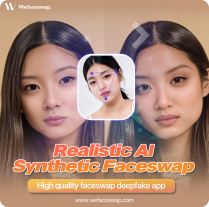The Ethical Implications of AI Face Swap
The Ethical Implications of AI Face Swap
Blog Article
Face Swap Fun: Creative Ways to Use Face Swapping Apps
The change of face trade technology from the trendy novelty to a main-stream tendency is nothing lacking fascinating. Originating as an enjoyable filter on early image apps, experience trades have today become an intrinsic element of social media content development and also qualified industries. Using its rapid evolution and increasing reputation, deepfake (딥페이크) technology has captivated millions worldwide. Programs like Face Change have performed an important role in this sensation, giving sophisticated and progressive face swapping practices that are easy to use.

Deepswap is a cutting-edge strong understanding engineering that enables for high-quality experience trades with just a couple clicks. It utilizes synthetic intelligence (AI) algorithms to analyze skin functions and effortlessly change them with still another person's. It has opened a world of innovative possibilities, enabling customers to produce jaw-dropping aesthetic effects and special content. Let's discover a few of the exciting jobs you possibly can make with Deepswap.
The Early Times of Experience Change
Experience swap engineering first seemed in the first 2010s with basic photo-editing apps. These early iterations were frequently clunky, making funny but glitchy benefits that fueled their appeal just as entertainment. Consumers could change faces with friends, animals, or even celebrities, discussing these entertaining pictures on social media platforms. While general, that entry-level technology exposed the doorway for developers to discover their untapped potential further.
Development Forced by Social Media
Fast forward to the mid-2010s, and the rise of applications like Snapchat and Instagram catapulted experience swaps into conventional culture. The thing that was once restricted to static photographs was now being altered in to real-time video filters. FaceSwap, Snapchat's iconic contact, turned certainly one of their most widely used characteristics, interesting millions of people daily. Studies suggest that by 2016, around 60% of Snapchat users had attempted its face exchange function at the very least once.
Simultaneously, social media marketing influencers started adopting experience swaps for content creation, heightening proposal through creativity and humor. That rising trend further cemented the technology's existence in popular culture, going beyond activity and emerging as a strong tool for storytelling.
Advanced Engineering and Broader Programs
Today, developments in synthetic intelligence (AI) and machine understanding have increased experience exchange resources, creating them more accurate and convincing than their predecessors. Deepfake technology represents the cutting-edge region of experience trading, enabling hyper-realistic overlays of 1 face onto another. Beyond leisure, qualified areas like filmmaking, advertising, and even electronic training have embraced these innovations.

For example, in 2021, studies indicated that nearly 15% of digital marketers were tinkering with AI-driven video personalization applying sophisticated experience swaps. This change shows how experience change engineering is crossing in to sensible applications, advancing their growing popularity.
A Trend on the Increase
What makes face swaps evergreen is their accessibility and adaptability. As a result of mobile-friendly apps driven by AI, everyone can test out experience swaps without specialized expertise. Whether for lighthearted enjoyment or qualified use, the expansion of the technology suggests continued growth.
From their simple beginnings as a photo-editing novelty to its modern-day applications in AI and marketing, face exchange technology has developed remarkably. With further breakthroughs on the horizon, that development is set to keep their acceptance for a long time to come.
Report this page